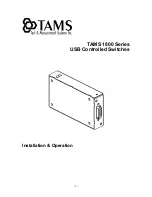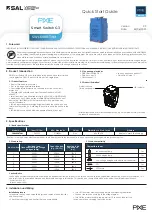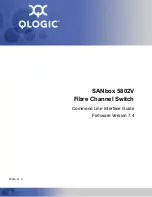
Chapter 13
| Basic Administration Protocols
UDLD Configuration
– 522 –
ends without the proper echo information being received, the link is
considered to be unidirectional.
◆
Aggressive Mode
– Reduces the shut-down delay after loss of bidirectional
connectivity is detected. (Default: Disabled)
UDLD can function in two modes: normal mode and aggressive mode.
■
In normal mode, determination of link status at the end of the detection
process is always based on information received in UDLD messages:
whether that’s information about the exchange of proper neighbor
identification or the absence of such. Hence, albeit bound by a timer,
normal mode determinations are always based on gleaned information,
and as such are “event-based.” If no such information can be obtained (e.g.,
because of a bidirectional loss of connectivity), UDLD follows a
conservative approach to minimize false positives during the detection
process and deems a port to be in “undetermined” state. In other words,
normal mode will shut down a port only if it can explicitly determine that
the associated link is faulty for an extended period of time.
■
In aggressive mode, UDLD will also shut down a port if it loses bidirectional
connectivity with the neighbor for the same extended period of time (as
that mentioned above for normal mode) and subsequently fails repeated
last-resort attempts to re-establish communication with the other end of
the link. This mode of operation assumes that loss of communication with
the neighbor is a meaningful network event in itself, and a symptom of a
serious connectivity problem. Because this type of detection can be event-
less, and lack of information cannot always be associated to an actual
malfunction of the link, this mode is recommended only in certain
scenarios (typically only on point-to-point links where no communication
failure between two neighbors is admissible).
◆
Operation State
– Shows the UDLD operational state (Disabled, Link down,
Link up, Advertisement, Detection, Disabled port, Advertisement - Single
neighbor, Advertisement - Multiple neighbors)
◆
Port State
– Shows the UDLD port state (Unknown, Bidirectional,
Unidirectional, Transmit-to-receive loop, Mismatch with neighbor state
reported, Neighbor's echo is empty)
The state is Unknown if the link is down or not connected to a UDLD-capable
device. The state is Bidirectional if the link has a normal two-way connection to
a UDLD-capable device. All other states indicate mis-wiring.
◆
Message Interval
– The interval between UDLD probe messages used for the
indicated operational state.
◆
Detection Interval
– The period the switch remains in detection state after
discovering a neighbor.
Содержание GTL-2881
Страница 30: ...Figures 30 Figure 450 Showing RIP Peer Information 669 Figure 451 Resetting RIP Statistics 670 ...
Страница 34: ...Section I Getting Started 34 ...
Страница 48: ...Section II Web Configuration 48 Unicast Routing on page 651 ...
Страница 151: ...Chapter 4 Interface Configuration VLAN Trunking 151 Figure 69 Configuring VLAN Trunking ...
Страница 152: ...Chapter 4 Interface Configuration VLAN Trunking 152 ...
Страница 229: ...Chapter 8 Congestion Control Automatic Traffic Control 229 Figure 135 Configuring ATC Interface Attributes ...
Страница 230: ...Chapter 8 Congestion Control Automatic Traffic Control 230 ...
Страница 596: ...Chapter 14 Multicast Filtering Multicast VLAN Registration for IPv6 596 ...
Страница 620: ...Chapter 15 IP Configuration Setting the Switch s IP Address IP Version 6 620 ...
Страница 670: ...Chapter 18 Unicast Routing Configuring the Routing Information Protocol 670 Figure 451 Resetting RIP Statistics ...
Страница 672: ...Section III Appendices 672 ...
Страница 678: ...Appendix A Software Specifications Management Information Bases 678 ...
Страница 688: ...Appendix C License Statement GPL Code Statement Notification of Compliance 688 ...
Страница 696: ...Glossary 696 ...
Страница 706: ...GTL 2881 GTL 2882 E112016 ST R01 ...
















































